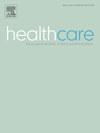Changes in primary care encounter rates during the veteran health administration’s electronic health record transition
IF 2.1
4区 医学
Q3 HEALTH POLICY & SERVICES
Healthcare-The Journal of Delivery Science and Innovation
Pub Date : 2025-03-09
DOI:10.1016/j.hjdsi.2025.100758
引用次数: 0
Abstract
Background
Electronic health record (EHR) transitions can cause major disruptions in the provision of primary care services. Veteran Health Administration (VHA), one of the largest integrated healthcare systems, underwent a major EHR transition at two sites. To date, there is limited data on the experience of primary care service lines at EHR transition sites.
Objective
To describe and quantify changes in the provision of primary care services at two sites that have experienced EHR transition.
Design
We conducted a retrospective study of primary care encounters 12 months before and after EHR transition. In addition, we applied economic structural change analysis using the expanded length of time (10 years of prior primary care encounters at sites) to understand how the transition of EHR compares to other major changes in primary care encounter volume during this time period.
Data source and main measure
Primary care encounters were measured using algorithms pre- and post-EHR transition from the national VHA Corporate Data Warehouse (CDW) and Cerner Millennium (CDW2) Databases.
Key results
In Spokane, the average number of monthly primary care encounters decreased from 7155 (SD = 682) in the 12 months prior to October 2020 (transition date) to 4181 (SD = 813) in the 12 months after implementation, a decrease of 41.6 %. The average number of monthly primary care encounters decreased from 8029 (SD = 511) in the 12 months prior to April 2022 (transition date) to 6495 (SD = 1152) in the 12 months after implementation, a decrease of 19.1 %. The structural change analysis identified EHR transition dates at both sites, including a major decrease in volume of primary care encounters.
Conclusions
Given the substantial decrease in primary care services, VHA must identify strategies to mitigate both the amount and the duration of reduced primary care encounters during the EHR transition.
退伍军人健康管理局电子健康记录过渡期间初级保健就诊率的变化
背景电子健康记录(EHR)的过渡可能对初级保健服务的提供造成重大干扰。退伍军人健康管理局(VHA)是最大的综合医疗保健系统之一,在两个地点进行了重大的电子病历过渡。迄今为止,关于电子健康档案过渡站点初级保健服务线路经验的数据有限。目的描述和量化两个经历电子健康档案转型的地区初级保健服务的变化。设计:我们对电子病历转换前后12个月的初级保健就诊情况进行了回顾性研究。此外,我们应用了经济结构变化分析,使用扩大的时间长度(10年以前的初级保健就诊地点)来了解电子健康档案的过渡与这段时间内初级保健就诊数量的其他主要变化的比较。数据来源和主要测量方法使用从国家VHA公司数据仓库(CDW)和Cerner Millennium (CDW2)数据库转换的ehr前后算法测量初级保健就诊情况。在斯波坎市,平均每月初级保健就诊次数从2020年10月(过渡日期)前12个月的7155次(SD = 682次)下降到实施后12个月的4181次(SD = 813次),下降了41.6%。平均每月初级保健就诊次数从2022年4月(过渡日期)前12个月的8029次(SD = 511)下降到实施后12个月的6495次(SD = 1152),下降了19.1%。结构变化分析确定了两个地点的电子病历过渡日期,包括初级保健就诊数量的大幅减少。鉴于初级保健服务的大幅减少,VHA必须确定策略,以减轻在电子健康档案过渡期间减少的初级保健接触的数量和持续时间。
本文章由计算机程序翻译,如有差异,请以英文原文为准。
求助全文
约1分钟内获得全文
求助全文
来源期刊

Healthcare-The Journal of Delivery Science and Innovation
HEALTH POLICY & SERVICES-
CiteScore
4.90
自引率
0.00%
发文量
37
期刊介绍:
HealthCare: The Journal of Delivery Science and Innovation is a quarterly journal. The journal promotes cutting edge research on innovation in healthcare delivery, including improvements in systems, processes, management, and applied information technology.
The journal welcomes submissions of original research articles, case studies capturing "policy to practice" or "implementation of best practices", commentaries, and critical reviews of relevant novel programs and products. The scope of the journal includes topics directly related to delivering healthcare, such as:
● Care redesign
● Applied health IT
● Payment innovation
● Managerial innovation
● Quality improvement (QI) research
● New training and education models
● Comparative delivery innovation
 求助内容:
求助内容: 应助结果提醒方式:
应助结果提醒方式:


